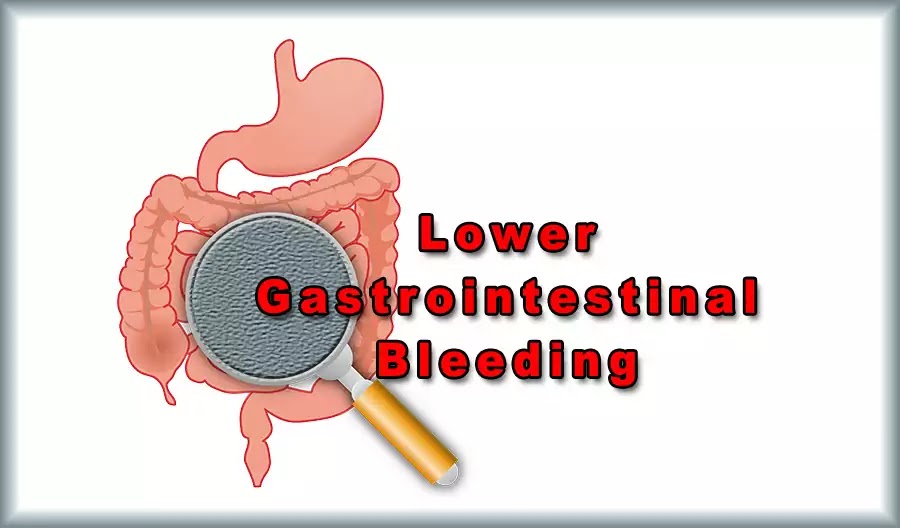Patients with lower gastrointestinal hemorrhage usually present with bright red rectal bleeding or dark red rectal bleeding which may be mixed with mucus. Bleeding may be slight or major. A patient with major bleeding needs urgent care and resuscitation.
Table of Contents
Causes of lower GI bleeding
Anorectal causes:
Hemorrhoids
Anal fissures
Mucosal prolapse
SRUS full form is Solitary Rectal Ulcer Syndrome
Causes in children:
Meckel diverticulum
Juvenile polyps
Inflammatory bowel disease
Causes in adults:
Inflammatory bowel disease
Adenomatous polyps
Carcinoma
A-V malformation
Meckel’s diverticulum
Causes in elders:
Diverticular disease
Angiodysplasia
Adenomatous polyps
Carcinoma
Ischemic colitis
Inflammatory bowel disease
History taking
History taking with lower gastrointestinal bleeding symptoms is very important.
When the distal lesion is present, a patient usually presents with bright red rectal bleeding.
In case of inflammatory or neoplastic cause, a patient comes with dark red rectal bleeding which may or may not be mixed with mucus.
In cancerous lesions, there may be a past history of abdominal pain and changes in bowel habits.
Diarrhea and urgency of defecation suggest any inflammatory condition.
Radiation colitis may be present in radiotherapy done for genitourinary malignancy.
Ischemic colitis usually present in elders who have cardiovascular disease.
Evaluation of the patient with a history of alcoholism, dyspepsia, uses of NSAIDs, or weight loss may give an idea of underlying causative factors.
Investigation
Digital rectal examination and proctosigmoidoscopy:
It is helpful to evaluate local lesions in the anorectal region.
Rectal biopsy:
It is helpful to diagnose any malignancy, types of polyps, SRUS, inflammatory disease, etc.
Stool microscopy and culture:
It evaluates microscopically for any blood, pus, or mucus present in the stool. Culture helps to detect infection if any. So we can plan for anti-infection medicines.
Colonoscopy:
This is the most helpful investigative procedure. With a camera, it directly examines the anorectal, sigmoid colon, and other colons also. We can also take a biopsy whenever necessary.
Mesenteric angiography:
It is helpful to evaluate rectal causes.
Upper gastrointestinal endoscopy:
It is done when distal local causes are not found.
Emergency laparotomy:
It may be done and may be combined with on-table colonoscopy if bleeding is massive and the patient is deteriorating.
Blood investigation:
Such as hemoglobin level, screening for clotting disorder, urea, and electrolyte estimation to evaluate the condition of the patient
Occult gastrointestinal bleeding:
Sometimes there may be chronic blood loss from the GI tract which we cannot see in our eye. This type of patient with occult bleeding may present with iron deficiency anemia. In these cases, an investigation is done with a fecal occult blood test using guaiac reagent. For further evaluation, a more sensitive, quantitative measure that is estimation of fecal concentration ⁵¹Cr-labelled RBC scan is done.
Management and treatment
When there is significant blood loss patient should be hospitalized.
Correct hypovolemia with plasma expanders which is followed by blood transfusion whenever necessary. In the elder patient, central venous pressure or Swann-Ganz monitoring is advised to prevent over transfusion and it is also a sensitive indicator of continued or recurrent bleeding.
Colonoscopy is preferred as it is helpful for diagnosis as well as for the planning of treatment if any lesion is found.
Hemoglobin level, electrolytes, urea, bleeding disorder, etc. should be evaluated by blood investigation and treatment is planned accordingly.
The final treatment is based on causative lesions of lower gastrointestinal hemorrhage.

